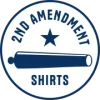The Winchester Repeating Arms Company introduced the .300 Winchester Magnum (7.62×67mm), a bottle-necked magnum rifle cartridge, in 1963. The ammo was based on the .375 H&H Magnum and adapted from the .338 cartridge that was introduced in 1958. The new round was made for the Model 70 rifle.
Firearms enthusiasts expected the conversion and were glad to have an update of the round introduced in 1958. Designers moved the shoulder forward by .156 in (4mm) and lengthened the case by .120 in (3mm). They shortened the neck, making it smaller than the diameter of the cartridge.
The ammo is popular with big game hunters and is readily available online at and most retail outlets. There is similar ammo on the market, but they lack the capabilities and economy offered by the .300 Win.
Popularity
Winchester designed the .300 Win be versatile round. Hunters, law enforcement, military units, and competition shooters have adopted the ammo due to its power and accuracy.
American hunters have made the .300 Win Mag the most popular of all calibers even though rounds such as the .30-378 Weatherby Magnum and .300 Remington Ultra Magnum offer more power.
Military units and law enforcement agencies use the cartridge for accurate marksmanship and long range sniper fire. The .300 Win has proven itself as a long range champion by acing multiple 1,000-yard (910m) competitions, outperforming even the most valiant competitors.
Hunting Big Game
Hunters gravitate toward the .300 Win Mag when choosing ammo for big game hunting. The round can be used in a wide variety of weapons. It is known to take down most large game in North America, including deer, elk, pronghorns, moose, and bighorn sheep.
Elk can weigh as much as 1,000 lbs. and moose weigh up to 1,400 lbs. Compared to other .30 caliber cartridges, the .300 Win Mag delivers better long range performance with a better bullet weight.
The .300 Winchester Magnum is powerful enough to hunt any member of the class 3 species.
Pros and Cons
Sportsmen will argue that when it comes to taking down big game, the performance of the .300 Winchester Magnum can’t be touched. But even the .300 has its limits when it comes to taking extreme shots.
Some shooters say they can shoot past 450-yards, but the kill becomes risky.
They have to account for wind drift and inaccuracy of the distance, particularly if the shooter is tired. The distance can be overcome with optics and a tripod, but there is danger of simply wounding the animal and leaving it to die in the woods.
The .300 Win Mag does have a downside. This powerful round is not recommended for novice or shooters of small stature due to its heavy recoil.
Even with energy absorbing stocks, butt pads and compensators, the recoil is almost 30% greater than with the .30-06 Springfield. The loud noise is also a factor, so the shooter should wear ear protection to prevent hearing loss.

